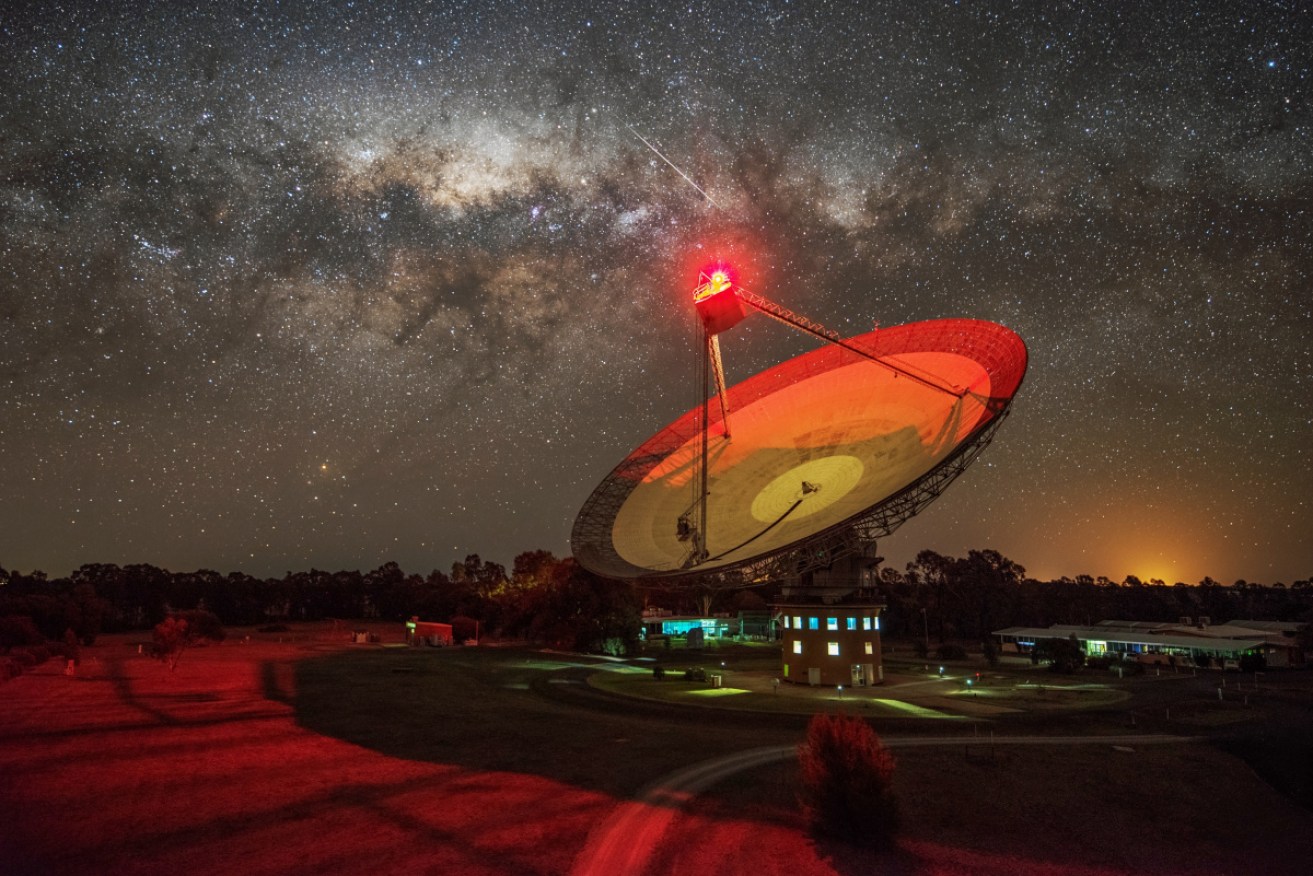An Aussie icon: Parkes dish added to the national heritage list


'The Dish' has been recognised for its contribution to astronomy. Photo: CSIRO/A. Cherney
The CSIRO’s Parkes telescope, famous for its role in broadcasting the moon landing, has been added to the national heritage register.
The Parkes telescope, known as “the dish”, is the 118th site on the list.
Environment Minister Sussan Ley said on Monday that the CSIRO Parkes Observatory was the first functioning scientific instrument to be added.
Ms Ley said the dish helped beam Australian science, technology and engineering around the world.
“It has also shone a unique light on the role of rural Australia and its contribution to scientific discovery,” she said.
Owned by the CSIRO, the dish is a piece of almost 60-year-old technology that continues to play a critical role in our understanding of the universe. The telescope has been continually upgraded and is now 10,000 times more sensitive than when it was built in 1961.
Astronomers have used it to find most of the known pulsars, rapidly spinning neutron stars, and identified the first fast radio burst, a phenomenon researchers are racing to explain.
Tweet from @PhillyPatterson
Professor Naomi McClure-Griffiths from the Australian National University spent more than 2000 hours observing the Milky Way using the Parkes telescope.
“Parkes was the very first telescope I visited as a student and it has remained a constant companion throughout my career,” she said.
“As far as telescopes go, Parkes was my first love – a love that has been kept alive through CSIRO’s outstanding instrumentation on this grand icon of radio astronomy.”

The telescope at CSIRO’s Parkes Observatory in 1961. Photo: CSIRO
Along with NASA’s Honeysuckle Creek Station in Canberra, the dish played a crucial role in broadcasting the moon landing back to the world. It received television signals from the Apollo 11 mission – beaming that famous “small step” into the homes of 600 million people in July 1969.
Tweet from @ITrustLabor
Parkes Shire mayor Ken Keith said the community in central-west NSW was proud of the 64-metre diameter telescope that takes pride of place in their region.
“It holds a special place in all of our hearts,” Cr Keith said.
Tweet from @CSIRO_ATNF
While it might finally have some recognition for its contributions to world science, the telescope has had fame before. It was the subject of the 2000 film The Dish, starring Sam Neill, Roy Billing and Roz Hammond, in the story of its role in the moon landing.
-with AAP








